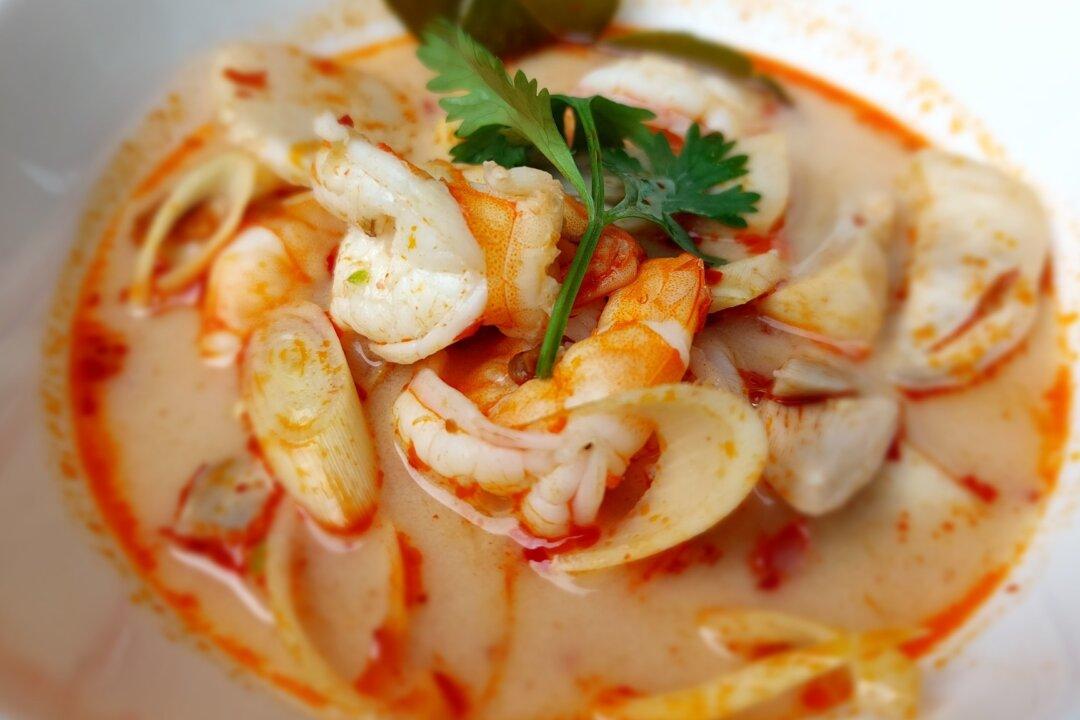“Thai cuisine is not fixed. You can adjust it any way,” says Ms. Ruchaneevan “Yui” Indragarunwet of Baipai Thai Cooking School in Bangkok. I attended her school to learn how to make one of my favorite Thai dishes: tom yum kung, or hot and sour soup with shrimp.
It’s the national soup of Thailand, but when it comes to making it, methods may vary slightly—as will the transliteration to English (yum or yam, kung or goong). There are even two styles, clear soup and milky, and the shrimp can be swapped for other proteins, such as chicken, fish, pork, and beef. But shrimp reigns supreme.





